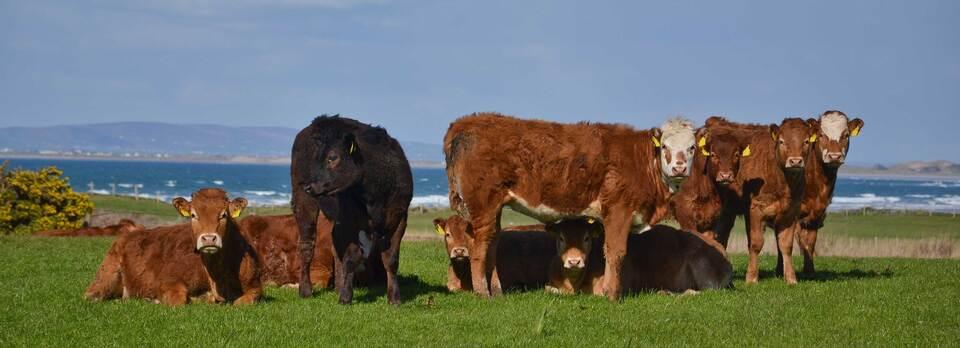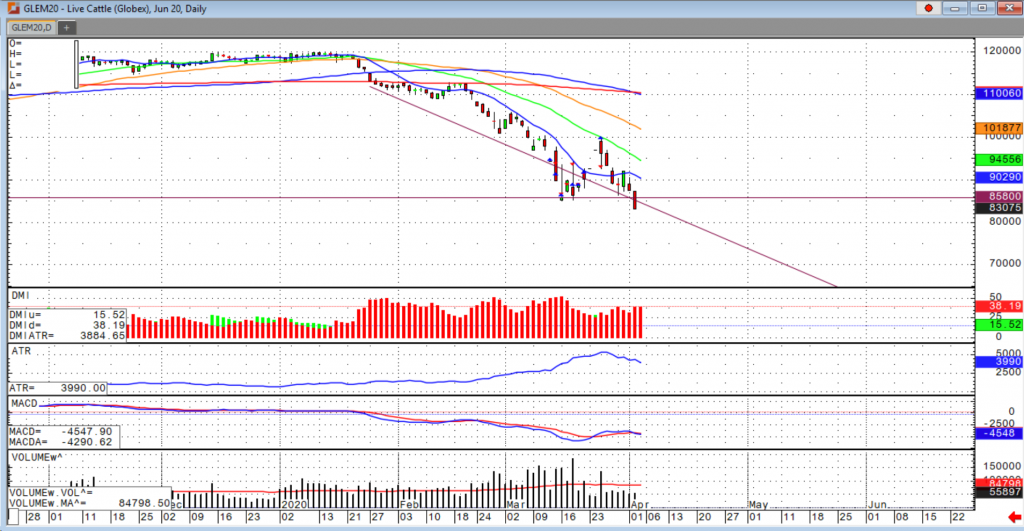
Meat markets had a wild ride in the futures market, and we could see a steep break in prices which would hurt packer margins and further slow the pace of slaughter. Weights are rising sharply along with a concern in a slowdown in production is adding more selling pressure to the market. A few developing stories coming from the packing industry are; there is growing concern and possible talks of strike from the meat packing union about working in the current conditions do to the COVID-19 pandemic, and a report that came out just yesterday (feedstuffs.com) about how Chuck Grassley (R-Iowa) wrote a congressional letter to AG Barr and Agricultural Secretary Sonny Purdue about how there is cause for concern about market manipulation of beef prices. Since Feb. 4, 2020, live cattle prices are down 16%. This is happening even while American consumers bought 77% more meat during the week of March 15 compared to the same week of 2019, Grassley said in his letter. Further, the four largest meat packing companies control approximately 80% of beef processing in the U.S.
However, if one or both of these two scenarios play out, I don’t see this ending well for cattle producers. If the union ends up going on strike, we could see an even bigger build up in supply not only for the near term but also for months to come going out until the 4th quarter. The concern for COVID-19 has even spread to South America as some Brazilian mayors have shut down aspects of their agricultural production.
According to msnmoney.com:
“In Brazil, a union nearly succeeded in shutting down two JBS SA chicken facilities by convincing a judge that the health risks were too great. In the U.S., chicken giant Perdue Farms is trying to appease workers after two dozen employees at a 600-person plant in Kathleen, Georgia, staged a walkout. The first meat processing employee to test positive for coronavirus in the U.S. also materialized Monday, at a Sanderson Farms Inc. plant.”
I don’t expect the volatility to slow down anytime soon, as it is the same with the hog market. The big discount from the futures to the cash market is typically a supportive force but with these sharp moves recently and the fears of a massive April supply is giving us this short-term selling pressure. I would stay short if you are able to, but buying some upside protection with calls is probably the most risk-adverse trade right now for these markets.
The USDA boxed beef cutout was down $7.30 at mid-session yesterday and closed $7.98 lower at $235.17. The cutout has fallen $15 in five sessions after climbing $43 in the nine previous sessions. Like other markets, the beef cutout is experiencing extreme volatility. Yesterday, cash live cattle traded $8-$9 lower from the end of last week in moderate volume. In Kansas, 2,155 head traded at $112-$113 with an average price of $112.15, down from $119.53 a week ago.
In Nebraska, 91 head traded at $111.25 versus an average price of $119.49 a week ago. In Texas/Oklahoma, 975 head traded at $112-$113 and an average price of $112.43, versus $119.27 a week ago. June cattle opened sharply lower on the session and closed down the 450-point limit yesterday. The USDA estimated cattle slaughter came in at 116,000 head yesterday. This brings the total for the week so far to 352,000 head, down from 361,000 last week at this time and down from 362,000 a year ago.



